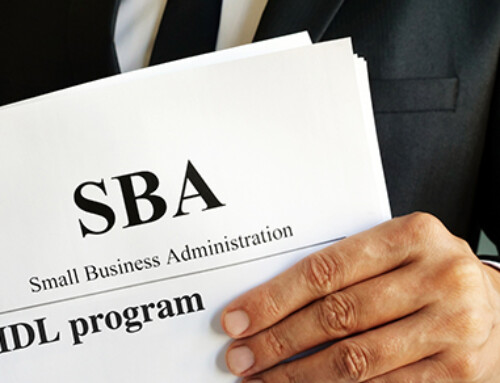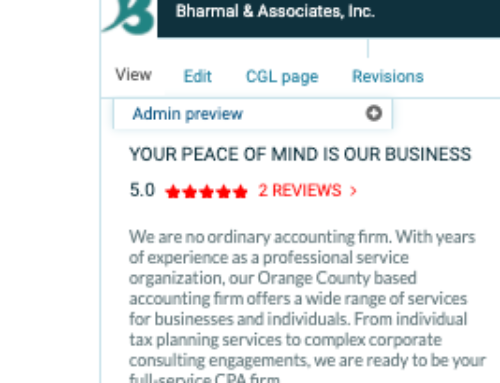COVID -19: Important Tax Breaks from the CARES Act
Congress just passed the CARES Act in response to the COVID-19 pandemic. In it, there are a lot of juicy tax benefits for you and your business. We’ll tell you about a collection of important ones you need to know.
The Check Will Be in the Mail
As you read this, the U.S. Treasury Department could be in the process of writing you a check, and it’s possible you could have that check in your hands within three weeks, according to the Treasury secretary. The check you receive this year is going to be your minimum amount. You don’t have to repay it or pay taxes on it. And next year, when you file your 2020 tax return—say, on April 15, 2021—you could receive more cash if the 2020 return shows a bigger credit than you receive this year. Technically, the cash you’re about to receive is an advance payment of a new refundable tax credit for your 2020 Form 1040 tax return. (This is the return you will file in 2021.) The advance tax credit (think cash) coming in the mail or electronically in the next three weeks or so is based on your 2018 or 2019 (if you filed it already) tax return. If your income qualifies for the full credit, you will receive
- $1,200, or $2,400 if you filed a joint return, plus
- $500 for each dependent age 16 or younger on December 31, 2020.
Your tax credit (the check in the mail) goes down by 5 percent of the amount by which your adjusted gross income (AGI) exceeds
- $150,000 on a joint return,
- $112,500 on a head of household return, or
- $75,000 for all other filing statuses.
The advance credit amount is based on
- 2019 AGI; or
- 2018 AGI, if you have not yet filed your 2019 return; or
- 2020 Social Security benefits statement, if you did not file a 2018 or 2019 tax return.
You’ll “true up” your advance tax credit on your 2020 Form 1040 (which you will file in 2021):
- If the tax credit amount (the cash you are about to receive) is less than the credit you qualify for based on 2020 AGI, then you’ll get the difference as a refundable tax credit in 2021 after you file your 2020 tax return.
- If the cash amount you receive this year is greater than the credit you qualify for based on 2020 AGI, you have a windfall. You don’t have to pay the excess cash back to the IRS.
Your current tax debts will not interfere with the cash amount you are about to receive. There are no offsets for outstanding tax debts. But there is an offset for past-due child support that is reported to the IRS by a state. In this case, the IRS will take the child support money from the advance tax credit before remitting any money to the taxpayer.
Planning tip. If you didn’t file your 2019 tax return yet, calculate if your advance credit is higher with your 2018 AGI. If it is, wait to file your 2019 return until after you get the advance credit paid to you.
Example. You filed a 2018 Form 1040 with AGI of $70,000 and no dependents. Your 2019 Form 1040, which you did not file yet, has an AGI of $105,000 and no dependents.
If you file your 2019 return now, you will get no cash from the advance credit because your AGI would have phased out your entire credit. But if you don’t file your 2019 return now, you receive $1,200. Fast-forward to your 2020 tax return—say your 2020 Form 1040 has AGI of $110,000. It’s over the threshold. No problem. Under the rules, you keep the $1,200.
Charitable Contributions
For tax year 2020 only, the CARES Act increases the limits on charitable contributions as follows:
- For individuals, there is no AGI limit for contributions normally subject to the 50 percent and 60 percent limitations. The 2020 no-limit rule does not apply to contributions to donor-advised funds.
- For corporations, the 10 percent limitation goes up to 25 percent of taxable income.
- The limitation on deductions for contributions of food inventory goes from 15 percent to 25 percent.
If you are a non-itemizer, you may now deduct up to $300 of cash charitable contributions above the line. This above-the-line deduction is a permanent change starting with tax year 2020.
Net Operating Losses
The CARES Act temporarily suspends some of the Tax Cuts and Jobs Act (TCJA) limitations on net operating losses (NOLs):
- For NOLs that arise in tax years 2018, 2019, and 2020, you can now carry them back five years to obtain refunds of taxes previously paid.
- Under the TCJA, an NOL deduction in a tax year usually cannot exceed 80 percent of taxable income, but the CARES Act suspends that limitation and allows a 100 percent deduction for tax years 2018, 2019, and 2020.
These new, temporary changes allow you to fully utilize your NOLs and potentially amend prior-year tax returns to get refunds.
461(l) Limitation
The TCJA created a new loss limitation rule (a ceiling) that limited your ability to use business losses. The CARES Act retroactively eliminates the Section 461(l) limitation rule for tax years 2018, 2019, and 2020 and moves the start to tax year 2021. Once again, this change allows you to possibly amend prior-year tax returns to get refunds now.
Qualified Improvement Property
Finally! Congress fixed the TCJA error. Qualified improvement property (QIP) is now 15-year property, and not 39-year property, for depreciation purposes. This means QIP is now eligible for bonus depreciation, where previously you could use only Section 179 expensing. This change is retroactive as if Congress originally included it in the TCJA, so you can amend prior-year returns to fully expense the property and potentially secure refunds.





